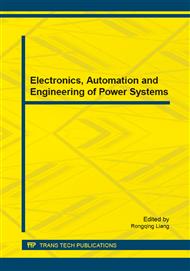p.408
p.412
p.416
p.422
p.428
p.435
p.443
p.447
p.451
The Application of the Fuzzy Cognitive Map among Intravenous Drug Users
Abstract:
This article carries on a research about spreading and imitating based on network modal of dynamic, complex and comparing various Agents. The Agent regarded as drug complex network nodes and combine Agent itself functions. Propose a dynamic complex network technology combined with Agent simulation model based on fuzzy cognitive map to study the spread of HIV. Using fuzzy cognitive map design with independent learning ability node agent based on personal emotion and cognition, agent considers the individual perception of the epidemic of surrounding environment, social discrimination, legal constraints strength, national testing and treatment, free needle exchange extrinsic and intrinsic factors in the environment of individual course, emotion, etc., Under the combined effect of individual values derived drug fuzzy cognitive map. Develop individualized decision rules to circumvent virus. This article studied the impact of fuzzy cognitive and social discrimination and legal factors on HIV transmission.
Info:
Periodical:
Pages:
428-434
Citation:
Online since:
February 2015
Authors:
Keywords:
Price:
Сopyright:
© 2015 Trans Tech Publications Ltd. All Rights Reserved
Share:
Citation:


